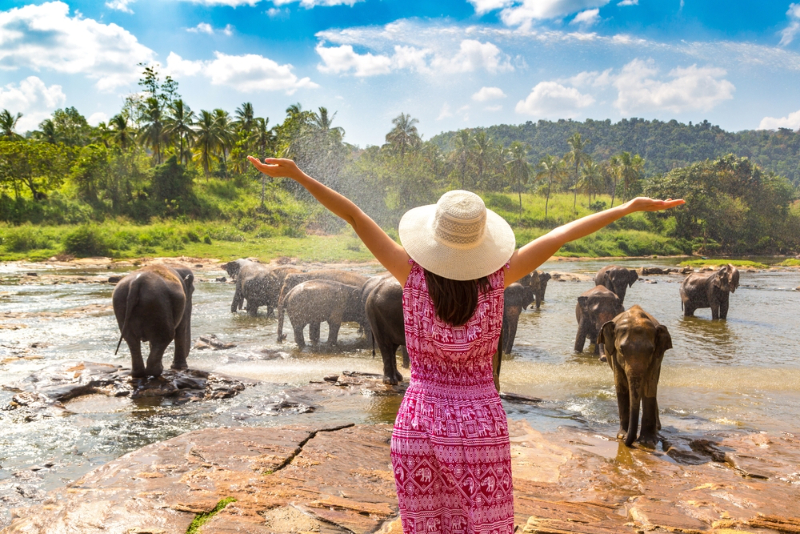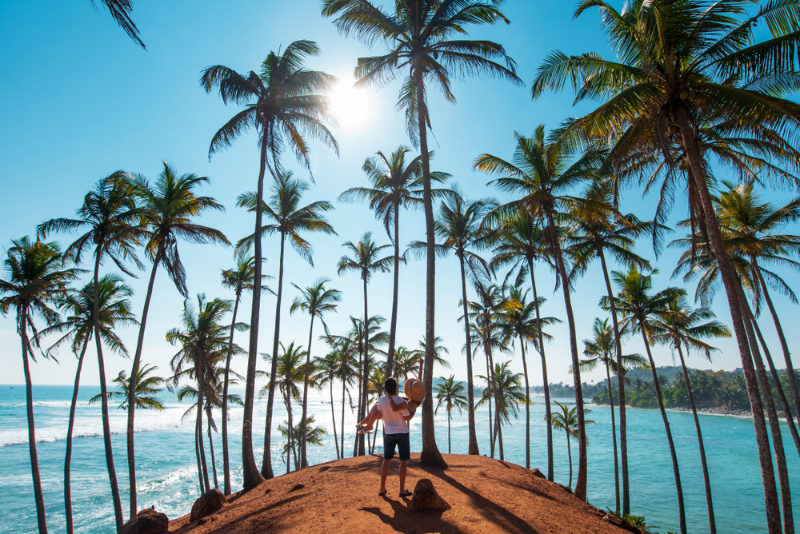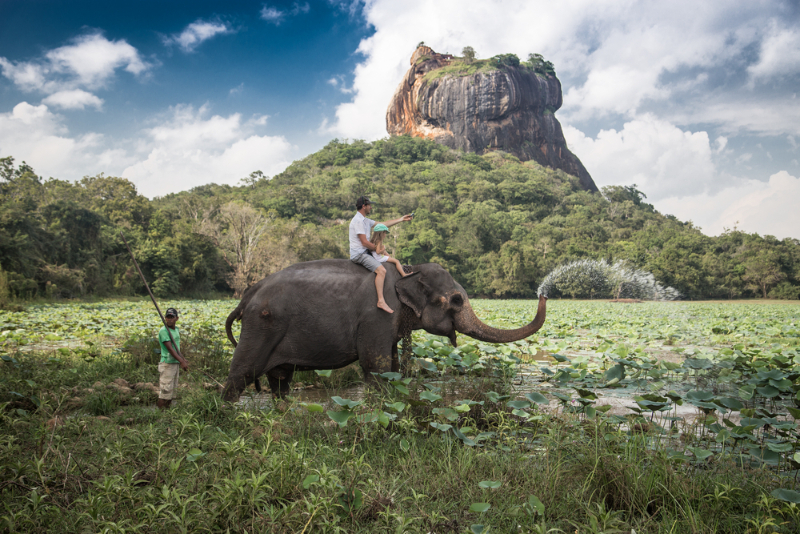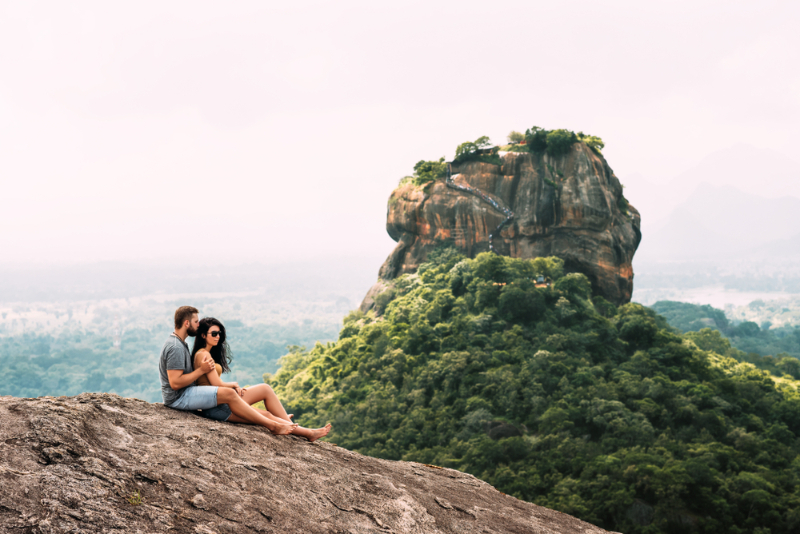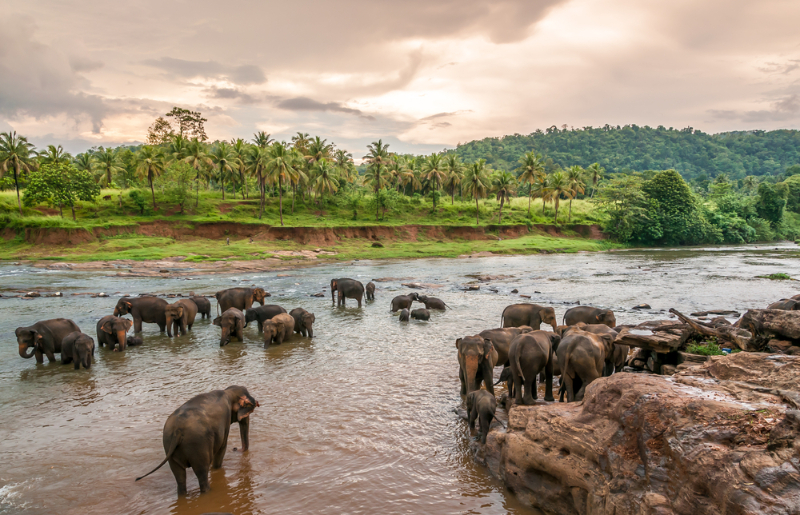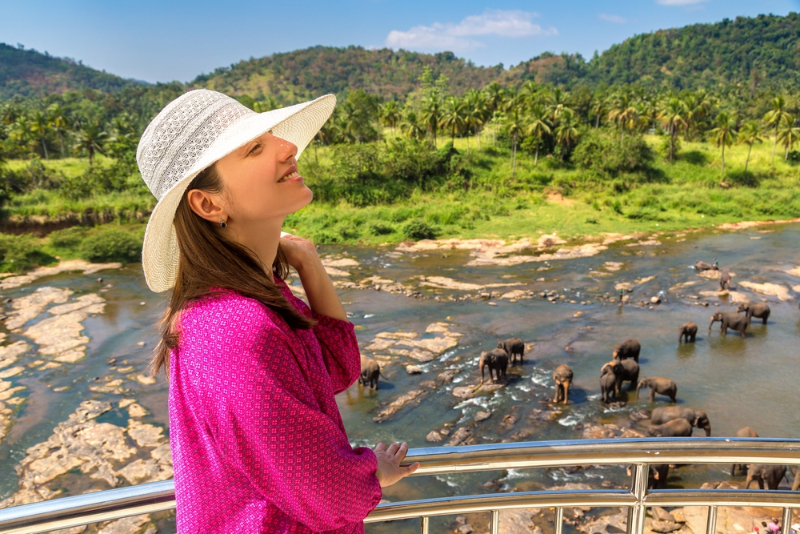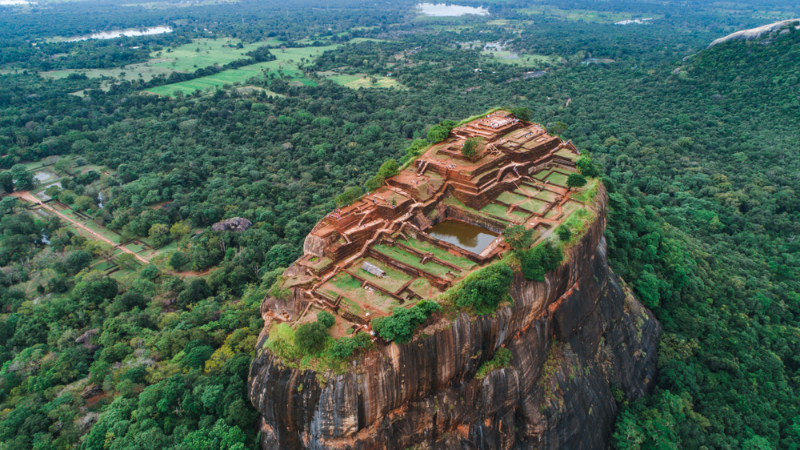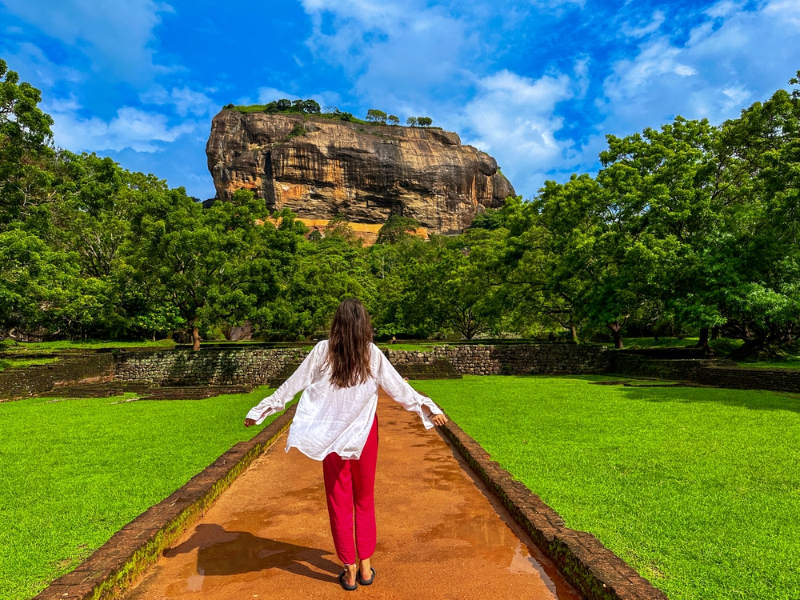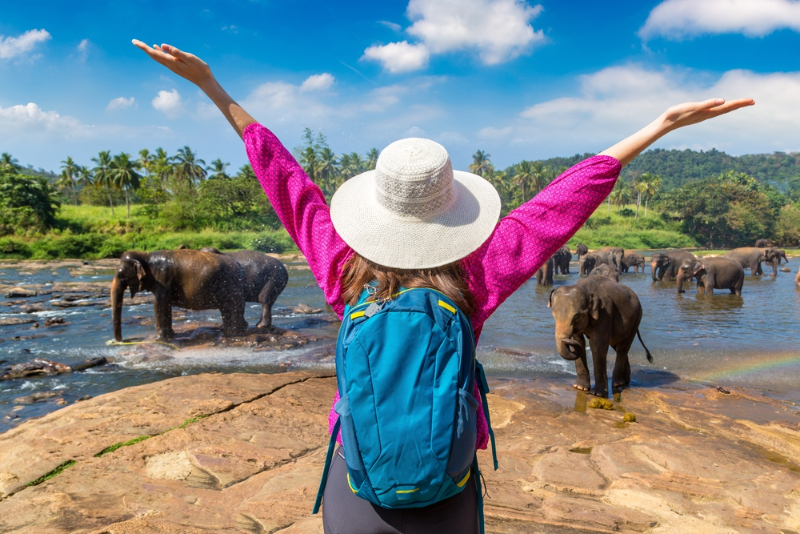Rising dramatically from the heart of Sri Lanka’s cultural abundance, Sigiriya Lion Rock is not just a towering rock but a window into a fascinating ancient world. This colossal 200-metre-high fortress, often referred to as the “Eighth Wonder of the World,” is a striking showcase of natural wonder and human ingenuity. Built in the 5th century by King Kasyapa, Sigiriya was once a royal palace and military base, surrounded by symmetrical gardens, moats, and water features that still leave archaeologists and travelers in awe.
What makes Sigiriya truly exceptional and worthy of its UNESCO World Heritage Site status is its unmatched combination of history, architecture, and art. The rock face is adorned with stunning frescoes of celestial maidens, and halfway up, you'll find the legendary Lion’s Gate, with its enormous stone paws guarding the final ascent to the summit. At the top lie the ruins of the ancient palace, offering panoramic views that are nothing short of breathtaking.
Overall, it’s not just a monument but a timeless story carved into stone. This guide will help you discover everything you need to know before visiting one of Sri Lanka’s most iconic and unforgettable landmarks. You can also explore Sigiriya as part of various curated Sri Lanka packages that bring together the country’s best cultural and natural highlights.
What makes Sigiriya truly exceptional and worthy of its UNESCO World Heritage Site status is its unmatched combination of history, architecture, and art. The rock face is adorned with stunning frescoes of celestial maidens, and halfway up, you'll find the legendary Lion’s Gate, with its enormous stone paws guarding the final ascent to the summit. At the top lie the ruins of the ancient palace, offering panoramic views that are nothing short of breathtaking.
Overall, it’s not just a monument but a timeless story carved into stone. This guide will help you discover everything you need to know before visiting one of Sri Lanka’s most iconic and unforgettable landmarks. You can also explore Sigiriya as part of various curated Sri Lanka packages that bring together the country’s best cultural and natural highlights.
What Is Sigiriya Lion Rock?

Sigiriya Lion Rock is one of the most fascinating places in Sri Lanka. It’s a massive rock that shoots up out of the forest, with ruins of an ancient fortress and palace sitting right on top. The place is full of history, beauty, and mystery.
Back in the 5th century, King Kashyapa built his royal palace here after taking the throne in a not-so-noble way, as he killed his father and feared revenge from his brother. To stay safe, he picked this giant rock as his hideout. But he didn’t just build a hideaway but created a masterpiece. At the top, he built a palace in the sky. At the bottom, you’ll still find beautiful gardens with ponds, fountains, and stone pathways that show how advanced people were even back then.
One of the most famous features was the lion entrance. Imagine climbing through the open mouth of a huge lion to reach the top! Today, only the lion’s paws remain, but they’re still massive and impressive.
Sigiriya isn’t just a rock; it’s a mix of history, art, and legend. From its ancient wall paintings to the peaceful gardens and the inspiring story of King Kashyapa, it’s a place that truly feels alive with the past.
Back in the 5th century, King Kashyapa built his royal palace here after taking the throne in a not-so-noble way, as he killed his father and feared revenge from his brother. To stay safe, he picked this giant rock as his hideout. But he didn’t just build a hideaway but created a masterpiece. At the top, he built a palace in the sky. At the bottom, you’ll still find beautiful gardens with ponds, fountains, and stone pathways that show how advanced people were even back then.
One of the most famous features was the lion entrance. Imagine climbing through the open mouth of a huge lion to reach the top! Today, only the lion’s paws remain, but they’re still massive and impressive.
Sigiriya isn’t just a rock; it’s a mix of history, art, and legend. From its ancient wall paintings to the peaceful gardens and the inspiring story of King Kashyapa, it’s a place that truly feels alive with the past.
Location and How to Get There

Sigiriya is located in the heart of Sri Lanka’s Cultural Triangle, in the Central Province. It lies in the Matale District, near the town of Dambulla, and is famously known as the “Lion Rock” due to its 200-metre-high ancient fortress surrounded by lush jungle and flat plains.
From Colombo, the capital city, Sigiriya is about 175 km away. You can take a train to Habarana or a bus to Dambulla, followed by a tuk-tuk ride to Sigiriya. For more comfort and time-saving efforts, many travellers opt for a private taxi or rental car, which takes around 4-5 hours.
From Kandy, the journey is around 90 km and takes about 2.5-3 hours by car or bus. This route is scenic, passing through rural landscapes and small villages, offering a peek into the real Sri Lanka.
From Dambulla, Sigiriya is just a 30-minute drive. Tuk-tuks are the most common way to reach the rock from here.
Best time to visit? Early morning, around 7:00 AM, is ideal. The weather is cooler, the climb is more pleasant, and you can beat both the heat and the tourist rush. Late afternoons work too, but mornings offer the best light and the freshest air for those panoramic views.
From Colombo, the capital city, Sigiriya is about 175 km away. You can take a train to Habarana or a bus to Dambulla, followed by a tuk-tuk ride to Sigiriya. For more comfort and time-saving efforts, many travellers opt for a private taxi or rental car, which takes around 4-5 hours.
From Kandy, the journey is around 90 km and takes about 2.5-3 hours by car or bus. This route is scenic, passing through rural landscapes and small villages, offering a peek into the real Sri Lanka.
From Dambulla, Sigiriya is just a 30-minute drive. Tuk-tuks are the most common way to reach the rock from here.
Best time to visit? Early morning, around 7:00 AM, is ideal. The weather is cooler, the climb is more pleasant, and you can beat both the heat and the tourist rush. Late afternoons work too, but mornings offer the best light and the freshest air for those panoramic views.
What to Expect When Climbing Sigiriya

Climbing Sigiriya is more than just ticking off a tourist spot as it's a bit of a workout, a walk through ancient history, and a whole lot of wow. You’ll be climbing about 1,200 steps, and yes, your legs will feel it. But it’s not a race, so take your time, breathe, and soak it all in.
On the way up, the Mirror Wall is your first proper stop. It once reflected the king’s image, but now it's known for centuries-old graffiti, some romantic, some just funny. A little further are the famous frescoes, which are vibrant, mysterious, and honestly quite beautiful. Then you reach the Lion Paws Terrace, where two massive carved paws stand guard.
Now, a few practical things: wear sturdy shoes; no flip-flops unless you enjoy slipping. The steps are uneven, sometimes narrow, and if it's wet, it can be slippery. Carry water, go early to beat the heat, and avoid leaning too far for that “perfect photo,” as the wind is no joke up there.
Reaching the top, you’re greeted with sweeping views, ancient ruins, and a sense of pure awe. It’s not just a climb but an experience that sticks with you.
On the way up, the Mirror Wall is your first proper stop. It once reflected the king’s image, but now it's known for centuries-old graffiti, some romantic, some just funny. A little further are the famous frescoes, which are vibrant, mysterious, and honestly quite beautiful. Then you reach the Lion Paws Terrace, where two massive carved paws stand guard.
Now, a few practical things: wear sturdy shoes; no flip-flops unless you enjoy slipping. The steps are uneven, sometimes narrow, and if it's wet, it can be slippery. Carry water, go early to beat the heat, and avoid leaning too far for that “perfect photo,” as the wind is no joke up there.
Reaching the top, you’re greeted with sweeping views, ancient ruins, and a sense of pure awe. It’s not just a climb but an experience that sticks with you.
Best Time to Visit

Timing your visit can make all the difference between a magical experience and a chaotic one. The best time to travel truly depends on what kind of vibes you're chasing- clear skies, smaller crowds, or postcard-perfect sunrise shots.
Season-wise, shoulder seasons i.e., spring (March to May) and autumn (September to November) are the best. You get mild weather, fewer crowds, and more breathing views at popular spots. Summers (June to August) may bring longer days, but they also pack the biggest tourist rush, inflated prices, and scorching afternoons. Winters? Less crowded, but you’ll need layers and warm clothes for those pictures.
Season-wise, shoulder seasons i.e., spring (March to May) and autumn (September to November) are the best. You get mild weather, fewer crowds, and more breathing views at popular spots. Summers (June to August) may bring longer days, but they also pack the biggest tourist rush, inflated prices, and scorching afternoons. Winters? Less crowded, but you’ll need layers and warm clothes for those pictures.
Sunrise vs. Sunset?

If you're a fan of golden light without the buzzing crowd, sunrise will be your secret weapon. Early mornings offer softer rays, peaceful views, and fewer people ruining your wide-angle shots. Sunsets, although breathtaking, often come with shoulder-to-shoulder crowds, especially at Insta-famous spots.
To avoid peak hours, aim for early mornings or late afternoons. Midday, especially between 11 AM to 3 PM, sees the heaviest footfall at major attractions. Whether you're exploring temples, mountains, or coastlines, considering these tips ensures a smoother and richer travel experience. Because let’s be real, timing is everything when it comes to making memories!
To avoid peak hours, aim for early mornings or late afternoons. Midday, especially between 11 AM to 3 PM, sees the heaviest footfall at major attractions. Whether you're exploring temples, mountains, or coastlines, considering these tips ensures a smoother and richer travel experience. Because let’s be real, timing is everything when it comes to making memories!
FAQs
1. What is Sigiriya Lion Rock, and why is it famous?
Ans: Sigiriya Lion Rock is an ancient rock fortress in Sri Lanka, famous for its dramatic setting and historical significance. Built in the 5th century by King Kasyapa, it features stunning frescoes, landscaped gardens, and a gateway shaped like a lion. It’s a UNESCO World Heritage Site and one of Sri Lanka’s most iconic landmarks, drawing visitors from around the world.
2. How many steps does it take to climb Sigiriya?
Ans: Climbing Sigiriya takes around 1,200 steps in total. The steps wind through beautiful gardens, steep staircases, and narrow rock paths before reaching the top. It may sound tough, but most people with average fitness can do it with short breaks. The breathtaking views from the summit make every step totally worth the effort.
3. Is climbing Sigiriya suitable for children or elderly travelers?
Ans: Climbing Sigiriya can be challenging for young children and elderly travelers due to its steep steps and high temperatures. However, it’s possible with frequent breaks, proper footwear, and hydration. There are railings for support, and the lower gardens can still be explored without climbing up. Therefore, fitness level and comfort with heights should be considered before attempting.
4. What is the best time of day to visit Sigiriya?
Ans: The best time of day to visit Sigiriya is early morning, around 7:00 AM. The weather is cooler, the sunlight is tolerable, and the crowds are fewer, making the climb more comfortable. Avoid midday, as it gets hot and crowded. Morning visits also offer a better chance to spot wildlife and enjoy peaceful views.
5. How much is the entrance fee for Sigiriya Rock?
Ans: The entrance fee for Sigiriya Rock varies based on nationality. For foreign tourists, the ticket costs around USD 30 to 35 per adult, while children between 6 to 12 years pay USD 15 to 20. Visitors from SAARC countries, including India, enjoy a discounted rate of around USD 15 to 20. Sri Lankan citizens pay approximately LKR 100 to 120, with children charged around LKR 50 to 60. Kids under 6 years can enter for free.
Want best packages handpicked of Sri Lanka just for you?
Share your travel needs and our travel experts will reach out to you.



